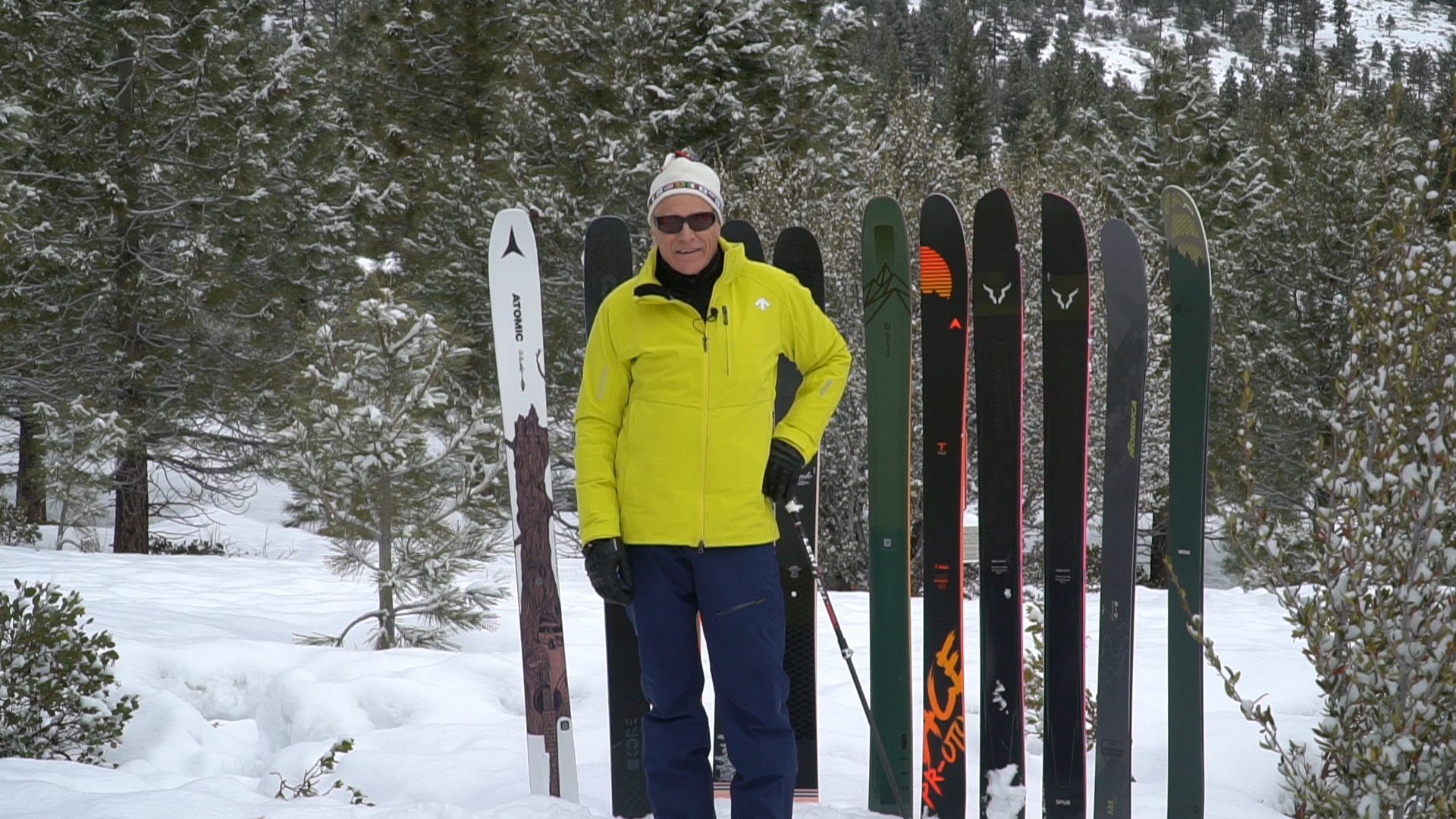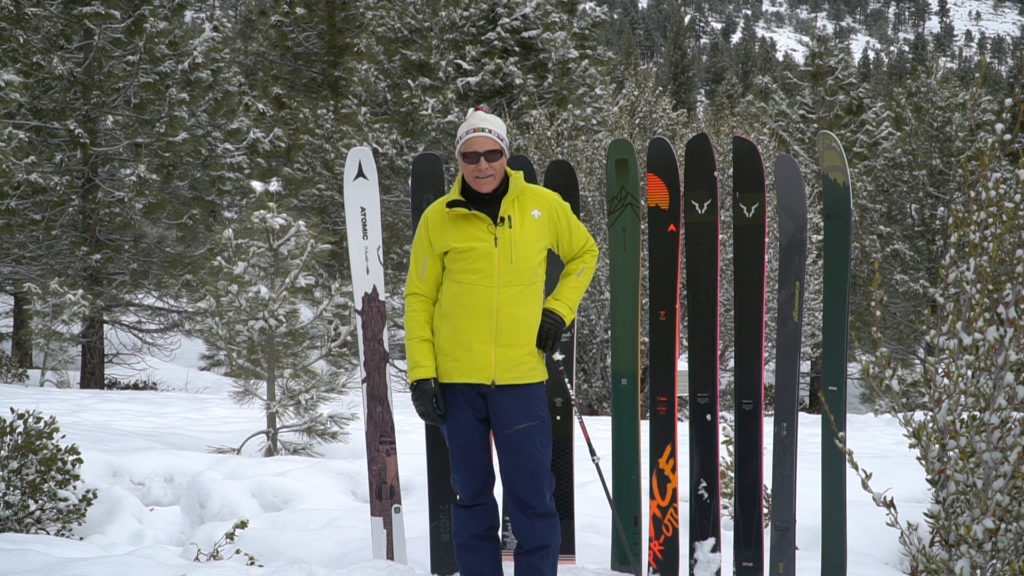Regular readers of my Revelations know that my primary communication vehicle is the printed word, which I try to conjure and arrange as artfully as I can with the entwined intent of entertaining and educating. While my goals remain the same as ever, the teaching this week shall be delivered by the most popular of modern media, video.
In the furnace of my imagination, the few emails I received that wondered whither my video content last year were embers I fanned into a crackling inferno of widespread public demand. And so I offer these four video essay-ettes as a service to my readers who would prefer to be viewers.
For those of you still enslaved by print, the following synopses will serve as your Cliff Notes, so you can sound conversant on the subjects at hand without cluttering your cortex with scads of details.
The Powder ski genre (waist >113mm) is characterized by the monstrous surface area of its members, which allows skiers of any skill set to surf along the surface of pristine snowfields. Because they all share a common goal of maximizing flotation, you’d expect their behavioral profiles to be monotonously similar.
They’re not. In this segment I profile eight different Powder models to reveal their distinctly different personalities. I’m not trying to rate the field or pick favorites; I’m highlighting the traits that make each model a unique experience.
If skiing isn’t your lifestyle but your life, you’ll end up owning one of these skis. Let this be your introduction to the thrills that lie ahead.
The Big Mountain category (waist 101-113mm) resides between the super-wide Powder genre and the All-Mountain West collection, the widest of a huge family of everyday skis. If Powder skis provide more flotation, and you already have an all-terrain model in your quiver, why would you want a Big Mountain ski in your locker?
In a word, crud, powder’s evil stepchild. Powder is what you dream about; crud is what you ski. The extra girth of a Powder ski that makes it so easy to smear across unbroken snow makes it harder to steer by conventional means, and the added weight eventually becomes fatiguing. A narrower Big Mountain ski improves agility and allows for a greater variety of skiing styles than a battleship Powder board.
In this episode I inspect five exemplars of the Big Mountain category to see why they may make a better choice than a Powder model for real-world, off-piste conditions.
Several seasons ago, everyone and his brother were buying fat skis to serve as their everyday ride. The number one ski at retail was a Big Mountain model, a status it would not have achieved were it being purchased solely as a second pair. Since that high point, the middle of the unisex market has been moving back to more slender shapes, a positive development for all concerned.
One sign that this trend to narrower-waisted ski will continue is the overnight emergence of a cluster of skis with an 82mm waist width. Atomic, Blizzard, Dynastar, Elan, Fischer and Liberty all have new models coming next fall that land squarely on this number, and Stöckli and Head have models only 1mm wider.
The increased investment in 82mm models led an overall resurgence in the Frontside genre (75-84mm). Roughly 17 high-end Frontside models will debut next fall, far more than the 10 new All-Mountain East models, the genre with the second most new skis. This video looks at five examples of 19/20 82mm models to illustrate this market shift.
Lest I be misunderstood, I’m not an anti-wide-ski-ite. I love wide skis in their place, which is powder and its derivatives. What concerns me is when they are out of their element, as will inevitably occur if they’re your only pair of skis. On hard snow, a ski that’s wider than your knee exerts a tug every time you lift the ski on edge. As long as you stay in soft snow, the potentially harmful forces are mitigated.
If you’re aware of the potential hazard, it’s always possible to ski protectively so you minimize stress on the joint. But if you treat a ski that’s wider than your tibia head as if it were a Frontside model, you’re cruising for a bruising.

